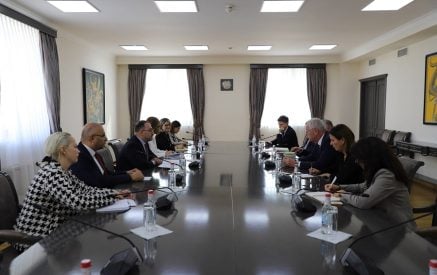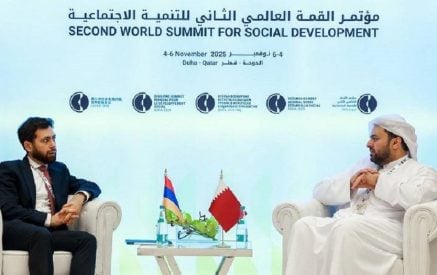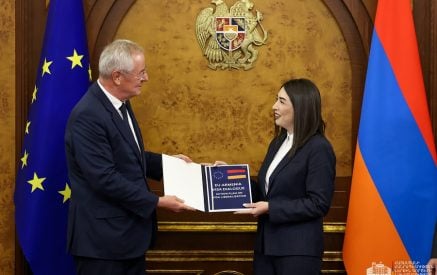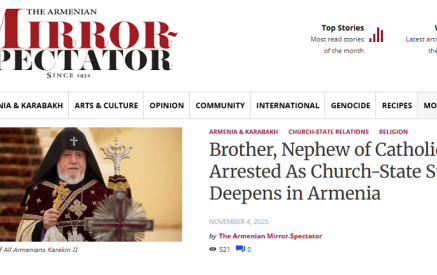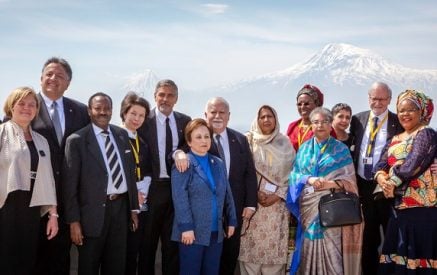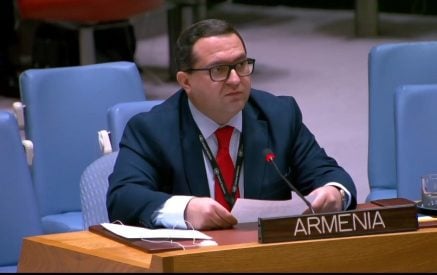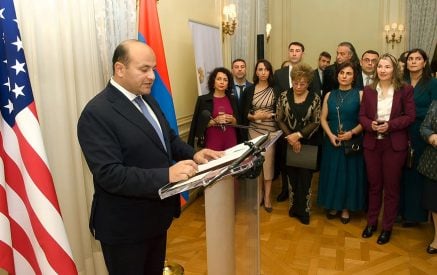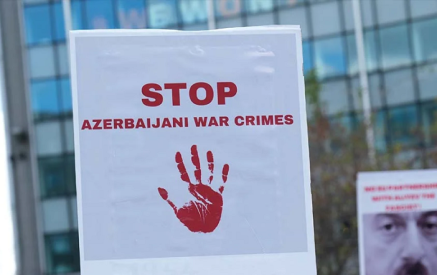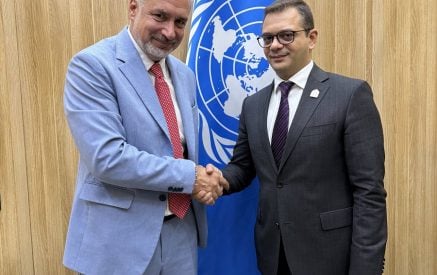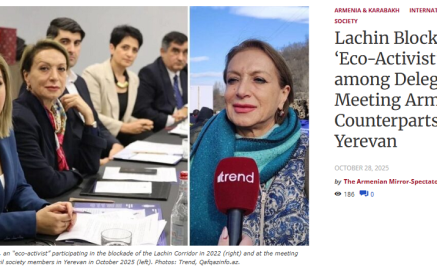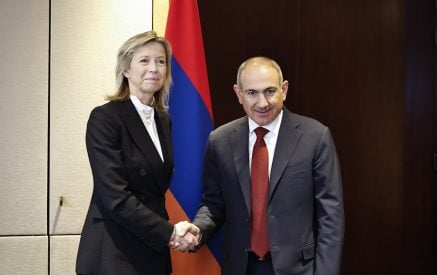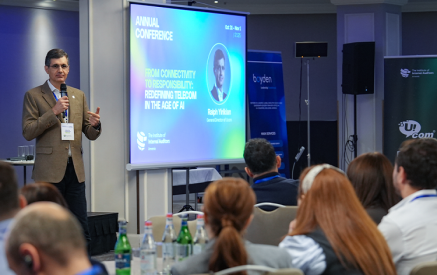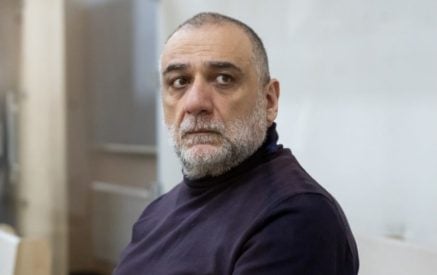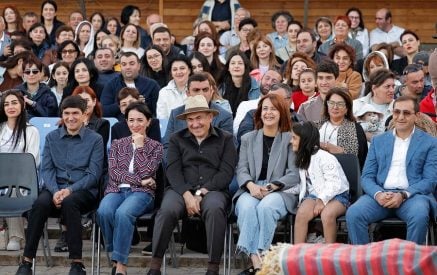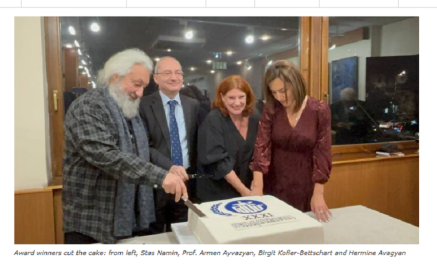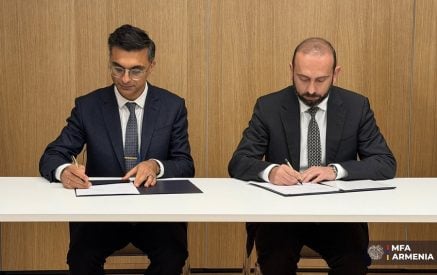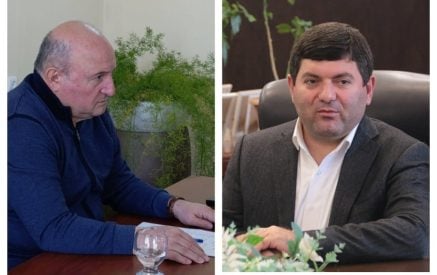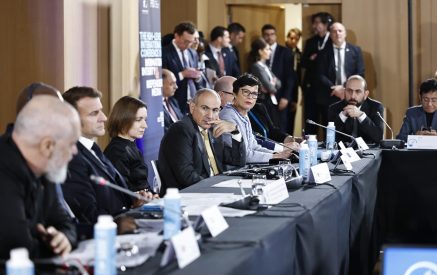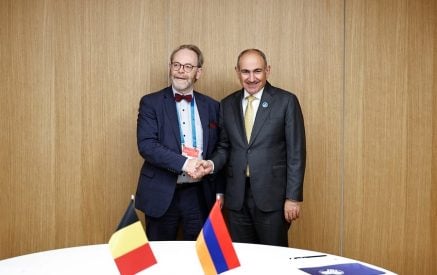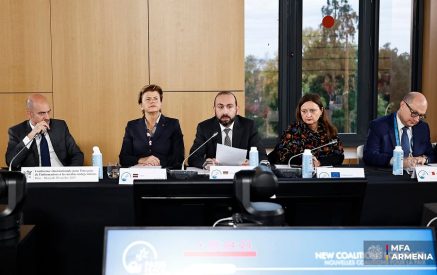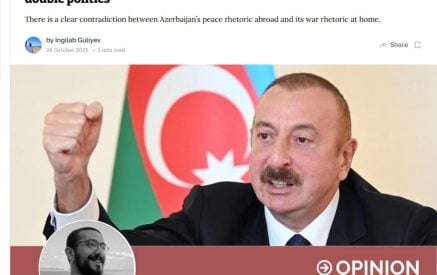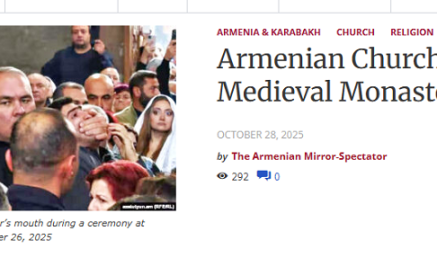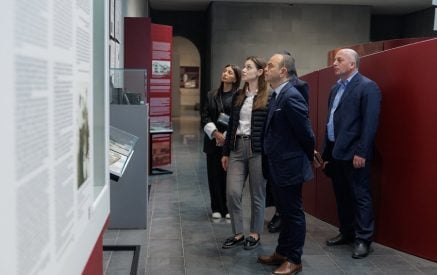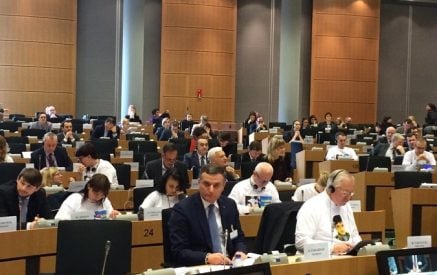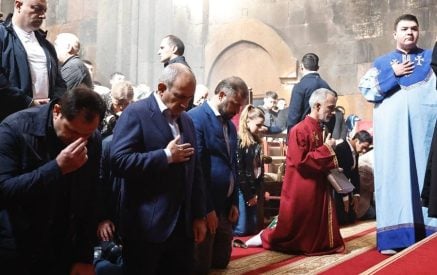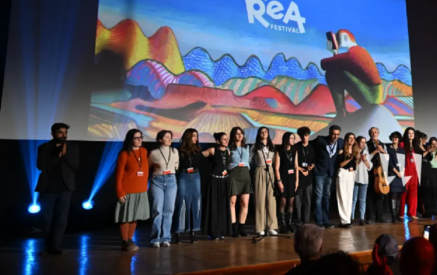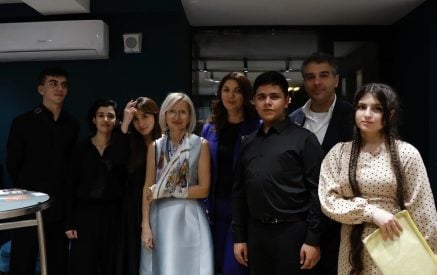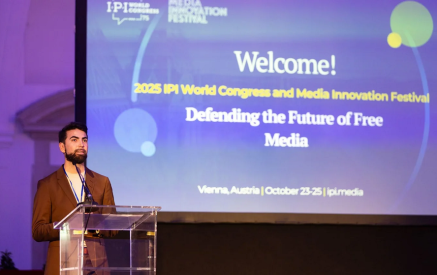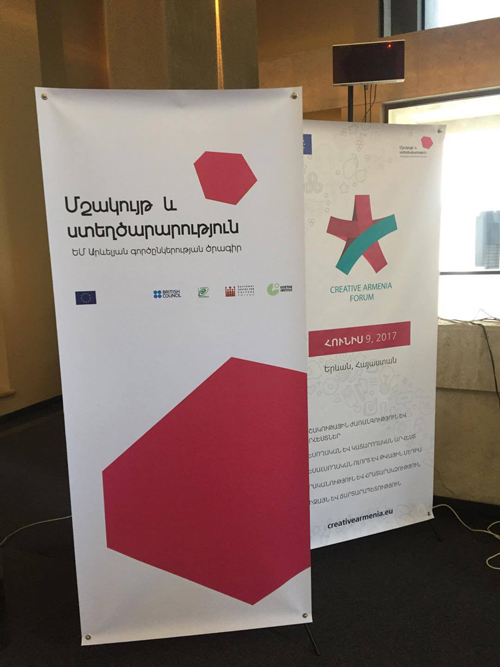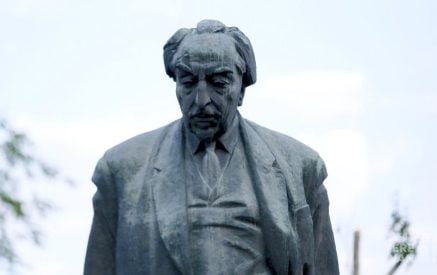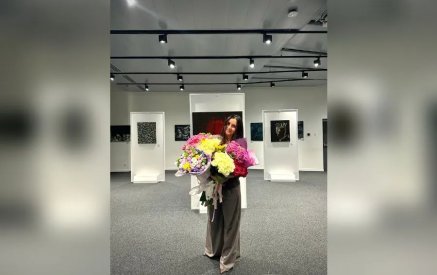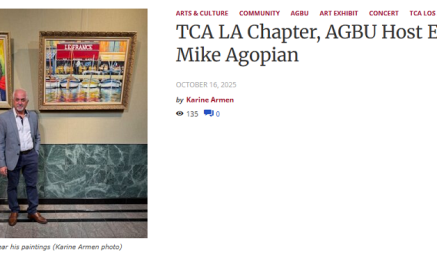Since 2016 the drafting of the national Culture for Development Indicators report has been launched within the framework of the EU Eastern Partnership “Culture and Creativity” programme. It enables the consideration of national challenges in the context of global developments. Accordingly, culture is hereafter measurable. The national CDI report is being drafted by General Standard Consulting by the mediation of the RA Ministry of Culture and jointly with the RA National Statistical Service.
As for the CDI methodology, it was developed by UNESCO and was introduced in 2009. This tool enables the assessment of the role of culture in the development of the state, the presentation by means of facts and figures the impact of culture on development processes. Consequently, the presentation of the impact of culture enables its incorporation in the development strategy of the state. The study was conducted in the following spheres – economy, education, governance, public participation, gender equality, communication, and heritage.
Culture Is not a Beggar
On January 27, 2017, the preliminary presentation of the CDI national report took place at Yerevan Komitas museum, which, as it was expected, was accompanied by effective discussions. It was multiply stressed during the event that culture is also measurable, and the presented figures testified to the role of culture in the development of the country. Fortunately, the stereotype that culture is a beggar has long been broken now, for it can play a central role in the development of economy.
The UNESCO Culture for Development Indicators constitutes a comprehensive system of 22 quantitative and qualitative indicators that fall into 7 classes. The CDI aims at the provision of an evidence-based approach for national and international development strategies and the formulation of a cultural policy. The document shows that, for example, in Armenian primary schools 16 per cent of academic hours is dedicated to art, during the first two years of secondary school their number amounts to 8,33 percent. Or 38 percent of academic hours are devoted to languages, and 27 percent is for science. As a result, little time is allocated for art. According to the same piece of research, 24 higher educational institutions in Armenia are funded by the state of which Yerevan State University, the Armenian State Pedagogical University after Khachatur Abovyan, the Armenian National University of Architecture and Construction, Yerevan State Conservatory after Komitas, Yerevan State Academy of Fine Arts and Yerevan State Institute of Cinema and Theatre provide education in the field of culture. A considerable part of institutions implementing cultural training are based in Yerevan, even though cultural courses are accessible in some state colleges, too.
It is found out that there are no special research projects in Armenia that would comprehensively present cultural developments targeting the formation of identity.
According to the document, the 2015 data testify that only 170,6 of 1000 RA citizens attend theatrical performances, and 60,9 go to concerts.
As for the participation of the civil society in the management of culture, according to the results of this study, almost all levels of the government have standing committees on culture. At the level of the executive branch there is a cultural council which acts as an expert counseling entity for the Ministry. Specialists in the field of culture and minority representatives participate in the work of the committees, too. However, their recommendations are only of counseling nature and are not binding.
How to Boost the Cultural Potential of Armenia
The Culture and Creativity programme of the EU Eastern Partnership has studied the cultural sector of Armenia and has identified 3 challenges, namely development of tourism, training of specialists in the field of cultural management and funding of projects.
Professor Robert Pickard analyzed the spheres of cultural heritage conservation, the matters of compliance between the country’s cultural policy, official documents and strategies, and the actions of the state. Also he assessed the level of digitalization of libraries and museums.
According to this study, the 15 recommendations targeting the development of cultural heritage in Armenia focus on the following: evidence-based policy-making, indicators that need to be considered in policy-making, cultural corridors and routes, rehabilitation of cultural heritage monuments, the role of clusters and networks, steps necessary for adopting an integrated approach, tourism and cultural heritage resources, skills development and training, financial support, funding and fundraising mechanisms, restoration and property rights, the museum sector, intangible culture and naturally, awareness raising activities.
The Focus of the Faro Convention
There is a reference to the Faro Convention in the study, based on the idea that knowledge about heritage and its application are part of the citizens’ right to participate in the cultural life, as it is established in the Universal Declaration of Human Rights.
It is a proved fact that cultural heritage plays a major role in the generation and enhancement of the social capital (citizen’s participation in public life, improvement of the quality of life, enhancement of diversity, intercultural dialogue and sense of belonging, facilitation of social inclusion, as well as acquisition of skills, knowledge, creativity and innovation) and acts as a tool in formal and non-formal education, life-long learning and training.
Besides all this, cultural heritage has important economic effects, also in cultural and creative spheres, and presents itself as a powerful force for local and territorial development and sustainable cultural tourism, assists the rehabilitation of rural and urban areas and creates various employment opportunities.
Cultural heritage also plays a concrete role in attaining the “smart, sustainable and inclusive growth” goals set in Europe 2020 Strategy since it contributes to socio-economic effects and environmental resilience.
The Faro Convention also highlights that the cultural heritage of Europe must be protected and reinforced. Resources inherited from the past in all their forms and aspects are meant here, inclusive of the tangible, intangible and digital forms, monuments, places of cultural significance, landscapes, skills, practices and customs, knowledge and forms of creative expression, collections maintained and managed by public and private entities, for example, museums, libraries and archives.
Thus, the conclusions of the report on enhancing the competitiveness of the cultural heritage sector in Armenia call for:
- recognition of the value of the cultural heritage and its potential as a shared resource for developing a society based on democratic, ethical, aesthetic and ecological values, in particular in crisis situations
- dialogue with cultural heritage stakeholders to identify and implement coordinated policies and actions for sustainable management and development of cultural heritage, as well as promoting collaboration with international and intergovernmental organisations (in particular the Council of Europe)
- mobilisation of resources for supporting, enhancing and promoting cultural heritage via integrated and holistic approaches (taking into account cultural, economic, social, environmental and scientific components)
- mainstreaming of cultural heritage policies in national and European policies
- identification and building of synergies between cultural heritage and other policy fields (naming, but not as an exhaustive list, the following: regional development, cohesion, agriculture, Maritime affairs, environment, energy and climate change, tourism, education, research and innovation)
- improvement of access to funding from all available programmes as part of integrated strategies for sustainable local and regional development
Lessons Learnt during the Development of Sustainable Ecosystem to Contribute to Creative Industry Development
Cristina Farinha, author of the EU-EaP Culture and Creativity Programme’s report on developing creative industries in Eastern Partnership region, presented the report at the Culture and Creativity for Innovation and Development Forum in Yerevan.
Cristina Farinha has been to Armenia twice, she has worked with local researchers, members of the government and representatives of the sector to find out what the major challenges, development trends and the potential in the country are.
The author of the report mentioned that they targeted policy-makers and prioritized awareness raising. In her words, the report will be an important tool for specialists. Cristina Farinha emphasized that the latter have a very good understanding of the sector; however, often they are not clear on their potential role in a broader context.
The author of the report thinks that when speaking about the creativity sector it is absolutely necessary to take the environment into consideration. She is convinced that one of the key features of creative industry is also the prioritization of other sectors and the establishment of relations among them.
According to the report, the challenges are common for all countries, and for Armenia, too, however, they are manifested differently in different countries, and there is no possibility for copy-pasting and finding prompt solutions, for every country has a unique path of development to follow.
Cristina Farinha underlined that judging by the UNESCO Culture for Development Indicators she could see that there is talent, a sufficient education level, sufficient human resources, a high level of Internet coverage in Armenia. Armenia is famous as an important hub of science and technology; however in our country there is a need to ensure a connection between the huge potential and business.
She stated that unlike other sectors creative industry is not mentioned as a priority in Armenia. This is lack of confidence, the economy is dependent on remittances and international donors. It is necessary to work towards infrastructure development, raising youth engagement levels everywhere, brand Armenia with the use of IT and creative sectors. According to the document it is necessary to draft a roadmap and activate cooperation among all sectors: culture should be interlinked with the economy, and the powerful potential of the Diaspora must be taken into account.
“You are well-positioned in the world, you should make use of it in order to develop the creative sector,” the author of the report mentioned.
She also added that it is necessary to develop an inclusive and scientifically appropriate policy and to realize that the representatives of the sector and not the Ministry are those who implement it. It is also necessary to do many experiments. As for the cultural entities, they were “diagnosed” with insufficient flexibility. The report states that it is necessary to develop sponsorships in the country. It is also mentioned that education in the art sector in Armenia is rather academic, and young people are not taught business skills, whereas it needs to be done at a young age to keep creative instincts vibrant.
What Can Be Learnt from the Best Practice in Other Countries?
Unlike Armenia, the sectors of culture and creativity in Great Britain have become a source of generating more than 11 million Euros an hour. The sectors of culture and creativity account for 7% of global gross domestic product. These sectors develop faster than production and service.
Culture and creative subsectors include architecture, archives, libraries and museums, audio-visual media (films, TV, video games and multimedia), tangible and intangible cultural heritage, ornament design, festivals, music, literature, performing arts, publishing, radio and visual arts. These sectors employ the largest number of young people in EU countries, thus becoming the third largest employer. 8,3 million EU citizens have employment, and their gross income is 558 billion Euros.
According to the report presented by Ernst & Young, the profit generated from tourism in France amounts to 18 billion Euros annually, and 35% of the money spent by tourists is accounted for culture.
Museums are pioneers in income generation. 3 of the 7 most visited European museums are in Paris and London. In particular, 10 million people visited the Louvre in 2012.
According to the same report, 37% of global profit in 2011 was collected from concerts and music festivals, that is, from performing arts.
Another example. In 1997 in Zaspa neighborhood in Gdansk, known to the world by its monumental drawings, the Monumental Art Festival was founded, on the basis of which the City Cultural Institute was created in the future. In 2011 – 2015 this institute trained 136 local people who became local guides and held 665 excursions in different neighborhoods of the town. By the way, the number of people participating in the excursions amounted to 8710.
Museomix is an event that was first held in 2011 in France and then spread out globally. It is a global three-day project within the framework of which artists meet at cultural institutions. Currently, 50 museums in the world are part of that project. In a 36-hour design competition 200 exemplary projects are created. Normally 800 people participate in this event.
Užupis was one of the most depressed neighborhoods in Vilnius (Lithuania) in the 1990s. One of the buildings situated here was illegally taken over and an art-incubator, called House on the River, was started here. Later it became a platform for a cluster of creative industries. Now 300 creative enterprises operate here, besides, 50 businesses were launched, aiming at the generation of profit from cultural and creative sectors.
Gohar HAKOBYAN


